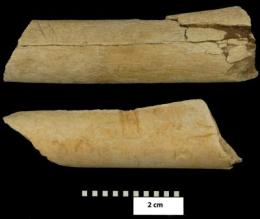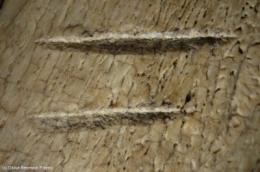Danger? Nanotube-Infested Waters Created in the Lab
Carbon nanomaterials can mix in water despite being hydrophobic, raising the possibility of a spreading spill in the future.
Carbon nanotubes--and their spherical cousins known as buckyballs--are proving to have myriad uses, finding employ in improved solar cells, electronics and medical probes. But the production volume of the tricky nanomaterials remains nanoscale when compared with the production volume of other industrial components. Nevertheless, environmental engineers have begun investigating how such materials might interact with natural environments if accidentally released and have discovered that at least some of the hydrophobic (water fearing) materials persist quite readily in natural waters.
Jae-Hong Kim of the Georgia Institute of Technology and his colleagues investigated how so-called multiwalled carbon nanotubes--layered, straws-within-straws of carbon atoms--interacted with natural water, in this case samples taken from the nearby Suwannee River. To their surprise, the carbon nanomaterial did not clump together as it tried to avoid water molecules, rather it interacted with the negatively charged natural organic matter in the river water. This organic matter seemed to shield the nanotubes and allow them to disperse throughout the water after an hour of mixing, instead of clumping and settling. "At the beginning, the solution is very black and, over time, it becomes grayish," Kim says. "What is interesting is that it is still grayish after a month." In other words, the nanotubes do not settle even after this time period.
This monthlong suspension means that Suwannee River water was actually better at promoting the dispersal of carbon nanotubes than chemical surfactants, which can maintain nanotubes in solution for roughly four days, according to the paper presenting the finding published online in Environmental Science and Technology. Similar studies with buckyballs--stable balls of 60 carbon atoms, also known as C60--had required copious organic solvents in order to maintain suspensions.
Because of the presence of such solvents, toxicity tests on C60 have been open to question as to whether the buckyballs or the solvents caused the damaging effects. Environmental engineers Volodymyr Tarabara and Syed Hashsham of Michigan State University and their colleagues tested the toxic effects of such buckyballs in water--without solvents--on lymphocytes, human immune cells. The researchers created solutions of C60 and water using ethanol at levels previously proven to have no toxic impact and using weeks worth of magnetically powered stirring.
At concentrations as low as 2.2 micrograms per liter, the clumps of C60 damaged the DNA of the immune cells, according to microscopic analysis presented in the December 1 issue of Environmental Science and Technology. The exact mechanism by which C60causes the DNA damage remains unclear, particularly because imaging could not detect the smallest of the buckyball clumps, but its DNA damaging effect was dose dependent. "We are not sure if very very small particles exist, one or two nanometers big," Tarabara says. "They may be very important as far as cellular damage."
Regardless, such nanopollution is unlikely to occur anytime soon: "The fact of the matter is that it takes weeks of mixing to generate appreciable concentrations in the size range where the particles are small enough not to settle," Tarabara notes. "It's not something that we can expect to be out there loose." But the environmental engineers argue that such research should be carried out before any widespread adoption of the new carbon nanomaterials takes place, especially because they seem to have a few surprises in store. "One thing is definite," Kim says, "these materials were not traditionally considered an aqueous-based contaminant." He adds: "I am saying, 'Well, it seems possible.'" --David Biello
[source: www.sciam.com]








